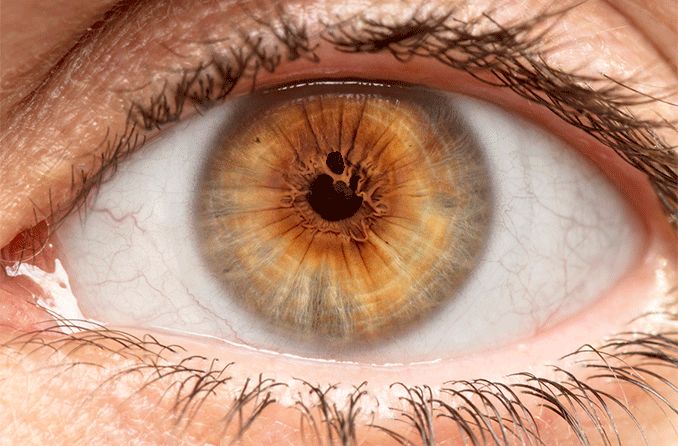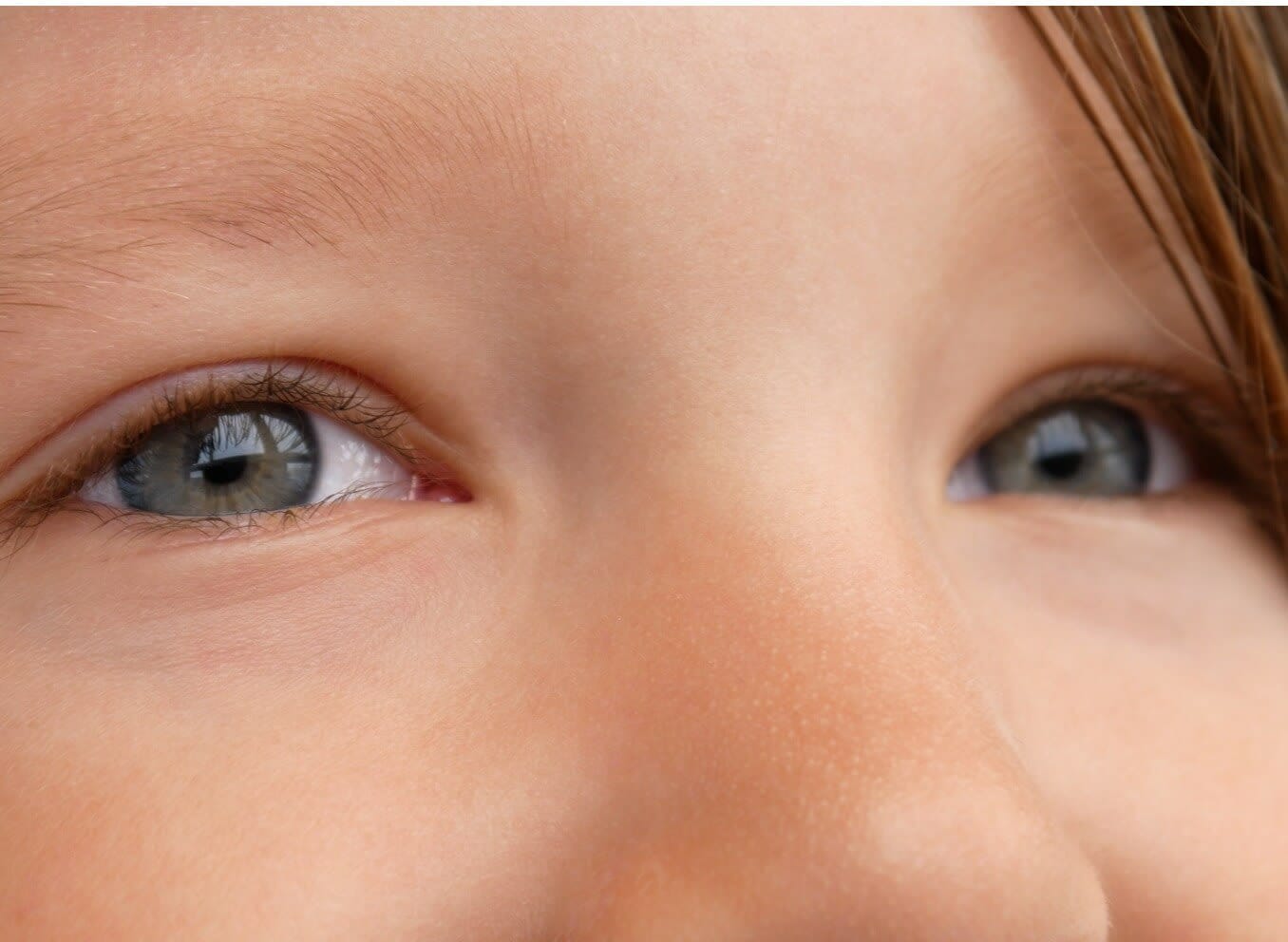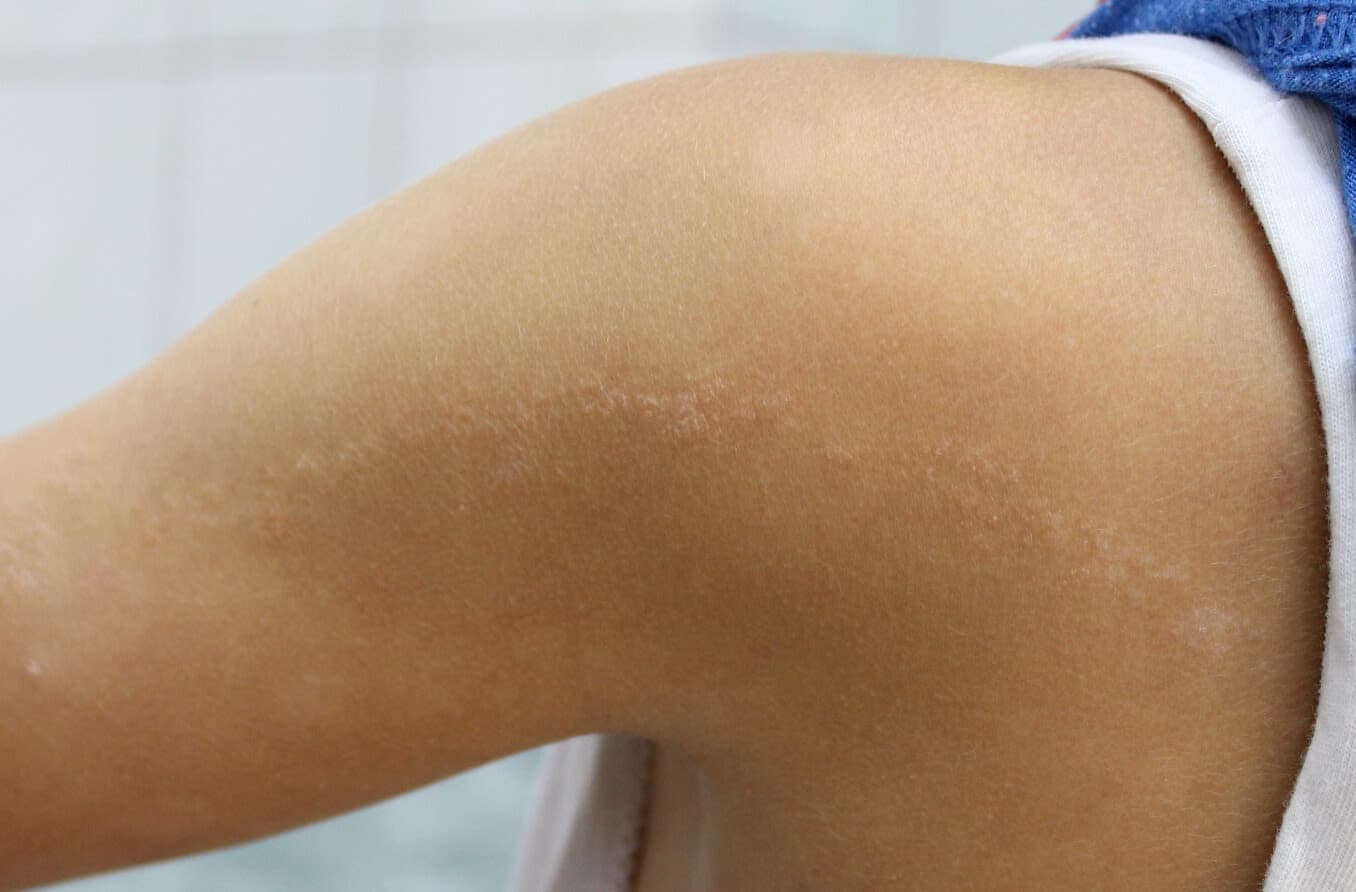An estimated one in 18,000 to 20,000 people in the U.S. has some type of albinism. While albinism is generally rare, some forms of the condition are extremely rare. All types can affect a person’s vision.
Oculocutaneous albinism
The most common form, oculocutaneous albinism (OCA) , occurs when the tyrosinase (TYR) gene mutates, resulting in a person having an absence or reduced amount of melanin (color-providing pigment).
With OCA, both parents must carry the albinism gene for their child to inherit the condition. When both parents are carriers, a child has a one-in-four chance of being born with and affected by OCA. If only one parent has this albinism gene, the child won’t be born with OCA but they will have a 50% chance of carrying the albinism gene.
OCA often causes the skin and hair to be pale or white, though it can present differently based on the subtype. Eye color is also affected, with eye shade ranging from light pink or red to lighter shades of more typical eye colors (with blue being most common). OCA also makes the skin and eyes highly vulnerable to UV damage and causes retina developmental problems.
Seven subtypes of OCA have been identified to date (OCA1 – OCA7), classified generally based on a person’s level of pigment and visual impairment. For example, someone with OCA1 has zero melanin and very low vision, and people with higher-numbered subtypes have a bit more pigment (possibly even dark hair) and slightly better vision.
Since albinism results from genetic mutations, a DNA test can confirm which type of OCA a person has if needed.
Ocular albinism
Ocular albinism (OA) is the other main form of albinism. Unlike OCA, it only affects the eyes. It is also much less common than OCA, affecting only around one in 60,000 males and even fewer females.
Ocular albinism affects only the eyes, not the skin or hair. Ocular albinism reduces coloring in the iris and affects proper development of the retina.
People with OA may have light sensitivity, nystagmus, strabismus and depth perception issues. Their visual acuity is typically lower than normal, ranging from 20/60 to 20/400.
Other conditions associated with albinism
In some cases, albinism may be present alongside another rare or similar condition, or even act as an indicator of the other’s presence. These include:
Hermansky-Pudlak syndrome (HPS) – Associated with bruising and bleeding, HPS is also considered a syndromic or less common form of albinism
Chediak-Higashi syndrome (CHS) – CHS is considered a less common, syndromic form of albinism linked to infection susceptibility
Angelman syndrome (AS) – Similar gene structure to albinism
Prader-Willi syndrome (PWS) – Similar gene structure to albinism
Griscelli syndrome – Symptoms include light skin and hair, similar to albinism





